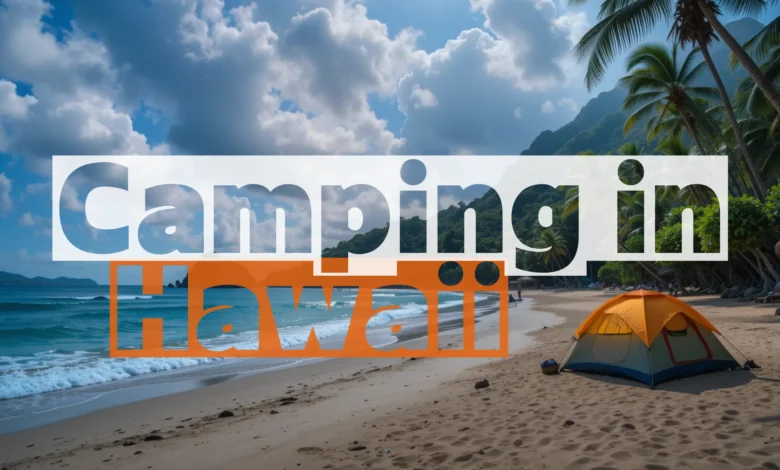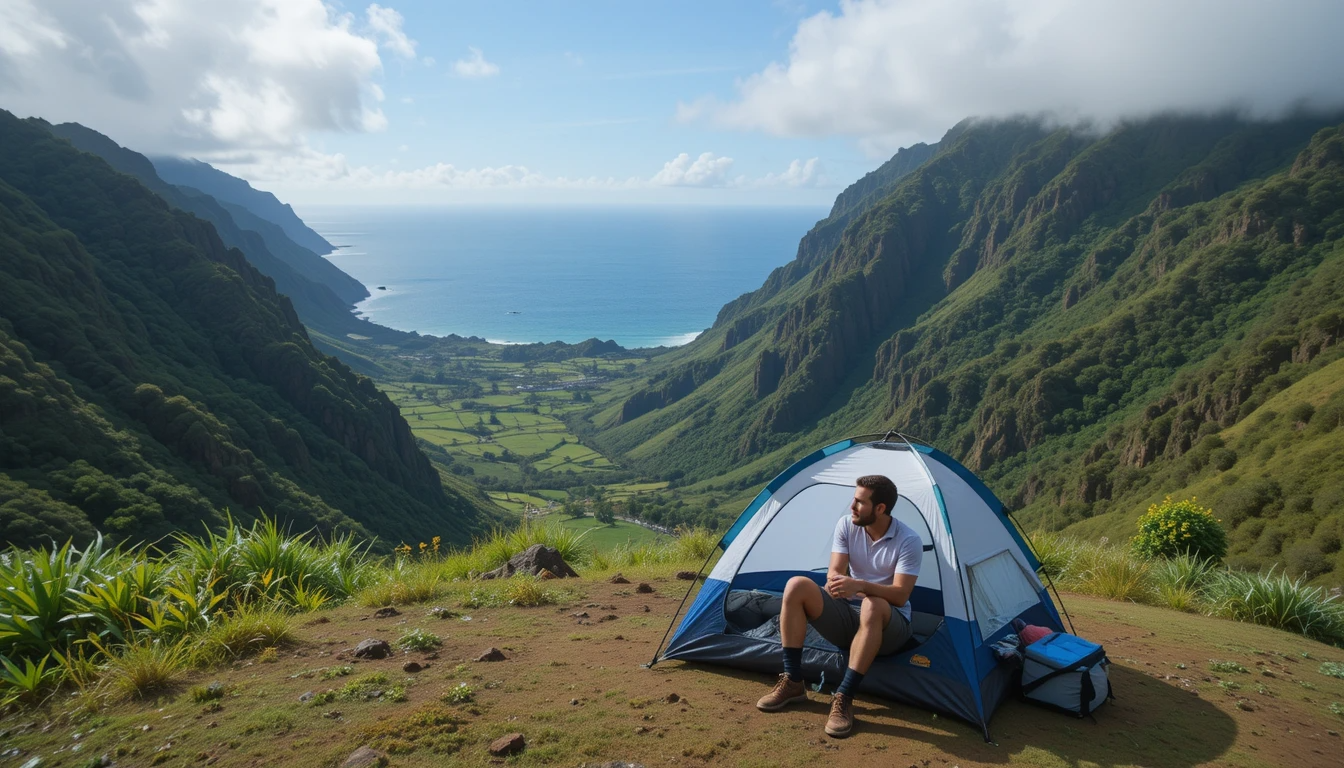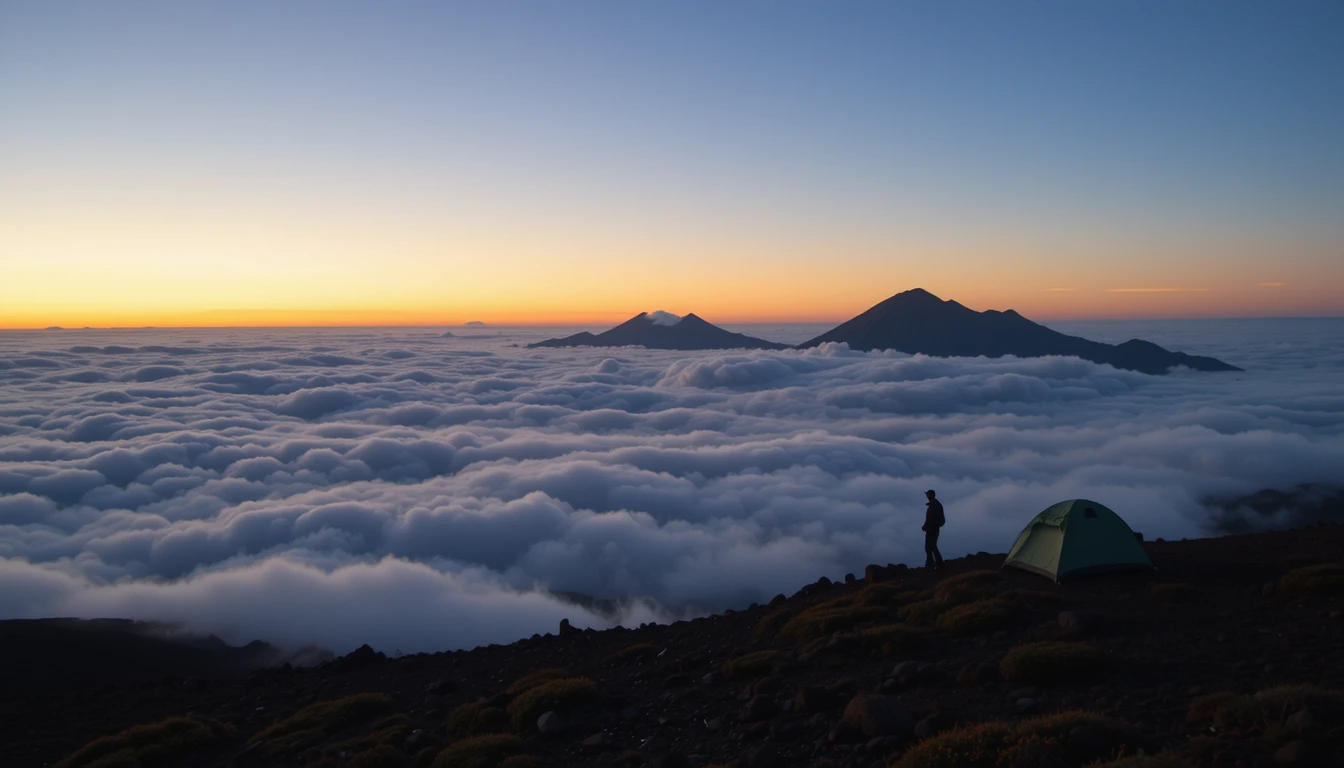🌺What Are the Rules for Camping in Hawaii?
A First-Hand Guide to Exploring Nature Responsibly

Introduction: My Hawaiian Camping Adventure – And Why You Need to Know the Rules
When I first landed on the island of Big Island , the scent of blooming plumeria and ocean breeze hit me instantly. I had one goal — to camp under the stars, wake up to the sound of waves crashing against lava rock, and experience Hawaii’s raw beauty firsthand.
But before pitching my tent, I learned that camping in Hawaii isn’t as simple as just showing up with a sleeping bag and cooler . There are strict rules, permits required, and cultural sensitivities to respect.
“What are the rules for camping in Hawaii?” became my most important question — and one that every traveler should ask before hitting the trails or beaches.”
In this article, I’ll share everything I learned from my own experience — including where you can legally camp, how to obtain permits, what gear you need, and why following these rules is crucial for preserving Hawaii’s natural beauty.
🏕️ The Legal Landscape: Where Can You Camp in Hawaii?
One of the biggest surprises was learning that wild camping is illegal across all Hawaiian islands . Unlike national parks in the mainland U.S., you cannot pitch a tent wherever you like. Every campsite must be authorized, whether it’s in a state park , national park , or private campground .
Here’s a breakdown of legal camping options:
1. State Park Campgrounds
Managed by the Division of State Parks , these sites are affordable and spread across all major islands. Some popular ones include:
- Lava Ridge Campground (Big Island)
- Makapuu Beach Campground (Oahu)
- Pololū Valley Overlook (Big Island)
Each site requires advance reservations and a permit. You can apply online via Hawaii State Parks .
2. National Park Campgrounds
If you’re planning to explore Hawai’i Volcanoes National Park or Haleakalā National Park , camping inside the parks is allowed but limited.
I stayed at Namakanipaio Campground near Kilauea, which offered basic facilities and easy access to hiking trails. Permits are issued on a first-come, first-served basis during peak season.
3. Private Campgrounds & Eco-Lodges
For more comfort, private campgrounds like Kona Cloud Farm or Hamakua Ranch offer glamping experiences with showers, Wi-Fi, and even farm-to-table meals.
These spots often have fewer restrictions than public parks but still require advance booking.

Camping at Pololū Valley Overlook on Big Island, Hawaii.
📜 Understanding the Rules: What You Need to Know Before You Go
Now that we’ve covered where you can camp, let’s dive into the actual rules for camping in Hawaii — based on my own trial and error (and a few lessons learned the hard way).
✅ Always Obtain a Permit
Every public campground requires a valid camping permit , and many book out months in advance. I nearly missed out on my dream spot at Waianapanapa State Park because I didn’t reserve early enough.
✅ No Fires Outside Designated Areas
Campfires are only allowed in designated fire rings . In dry seasons, open fires may be banned entirely due to wildfire risks.
I brought a portable camping stove instead — a smart move, especially when visiting volcanic terrain.
✅ Leave No Trace Policy
This rule isn’t just a suggestion — it’s enforced strictly. You must pack out everything you bring in , including food scraps and biodegradable items.
I saw signs everywhere reminding visitors: “Take only memories, leave only footprints.”
✅ Respect Wildlife and Vegetation
Do not disturb native plants or animals. Many species are endangered, and some — like the nēnē goose — are protected by law.
I once tried to take a small lava rock as a souvenir and was gently corrected by a ranger: “Leave the land as it is.”
✅ Keep Noise Levels Down
Quiet hours typically run from 9 PM to 7 AM , especially in state and national parks. Generators, loud music, and shouting are prohibited.
I learned this lesson quickly when my group got a warning after laughing too loudly around our campfire late at night.
✅ Dogs and Pets Are Not Always Allowed
Some parks allow pets but restrict them to certain areas. Others, like Haleakalā , don’t allow pets at all. Always check the specific rules for your destination.
📍 Best Places for Legal Camping in Hawaii
Based on my travels, here are some of the top-rated spots for legal camping in Hawaii:
1. Pololū Valley Overlook (Big Island)
This stunning cliffside location offers jaw-dropping views of the Pacific and easy access to black sand beaches. It’s also close to Waipiʻo Valley — perfect for adventurous hikers.
2. Waianapanapa State Park (Maui)
Famous for its black sand beach and sea caves, this coastal campsite is ideal for romantic getaways or solo reflection.
3. Kalalau Trail (Kauai)
While technically a hike, the Kalalau Campground at the end of the trail is accessible only by foot or kayak. This remote paradise is worth every blister!
4. LaPakea Campground (Molokini Crater Area)
Great for families and snorkelers, this quiet spot offers stunning coral reefs just offshore.
5. Ka‘ena Point (Oahu)
Located at the westernmost tip of Oahu, this beachfront site feels untouched and serene — perfect for stargazing.
🧭 Planning Your Trip: How to Prepare for a Hawaiian Camping Adventure
From gear to mindset, here’s what I recommend:
🎒 Packing Essentials:
- Lightweight tent or hammock
- Sleeping bag and pad
- Portable stove and fuel
- Water purification system or filters
- Reusable containers and utensils
- Biodegradable soap and trash bags
🗓️ Booking Tips:
- Apply for permits at least 3–6 months in advance
- Check for seasonal closures (especially during hurricane season)
- Consider off-peak travel for better availability and weather
🌞 Safety Reminders:
- Be aware of flash flood warnings in valleys
- Protect yourself from mosquitoes (bring repellent!)
- Stay hydrated — heat and humidity are real challenges
🌿 Sustainable and Responsible Camping in Hawaii
One of the most humbling parts of my journey was learning about Native Hawaiian culture and the deep connection locals have with the land.
Camping in Hawaii comes with a responsibility to preserve the environment and honor local traditions. Many sacred sites, such as heiau (temples) or burial grounds, are off-limits to tourists.
I made it a point to learn from local guides and participate in eco-conscious tours that gave back to the community.
“Respecting the land isn’t just a rule — it’s a privilege.”
🍴 Local Culture and Cuisine: What to Eat While Camping in Hawaii
No trip to Hawaii is complete without trying local flavors. While camping, I packed lightweight ingredients and cooked fresh meals using local produce like:
- Taro (used in poi)
- Fresh fish (ahi poke bowls)
- Tropical fruits (mangoes, pineapples, papayas)
I also visited nearby farmers markets and roadside stands to support small businesses.
📸 Capturing the Moment: Photography and Exploration
As a travel photographer, I found endless opportunities while camping in Hawaii. From sunrise over Haleakalā crater to star-filled skies above Mauna Kea, each day felt like a postcard come to life.
Make sure to carry extra batteries, a sturdy tripod, and a waterproof camera case — especially if you plan to snorkel or swim near lava flows.

Watching sunrise at Haleakalā National Park, Maui, Hawaii.
🧭 Final Thoughts: Is Camping in Hawaii Worth It?
Absolutely — but only if you follow the rules and show respect for the land, people, and wildlife.
From breathtaking landscapes to unforgettable sunsets, my time camping in Hawaii taught me more than just the rules — it taught me patience, humility, and gratitude for nature’s gifts.
So, if you’re wondering what are the rules for camping in Hawaii , remember this:
“Follow the guidelines, leave no trace, and you’ll not only enjoy an incredible adventure — you’ll help protect Hawaii’s beauty for future generations.”